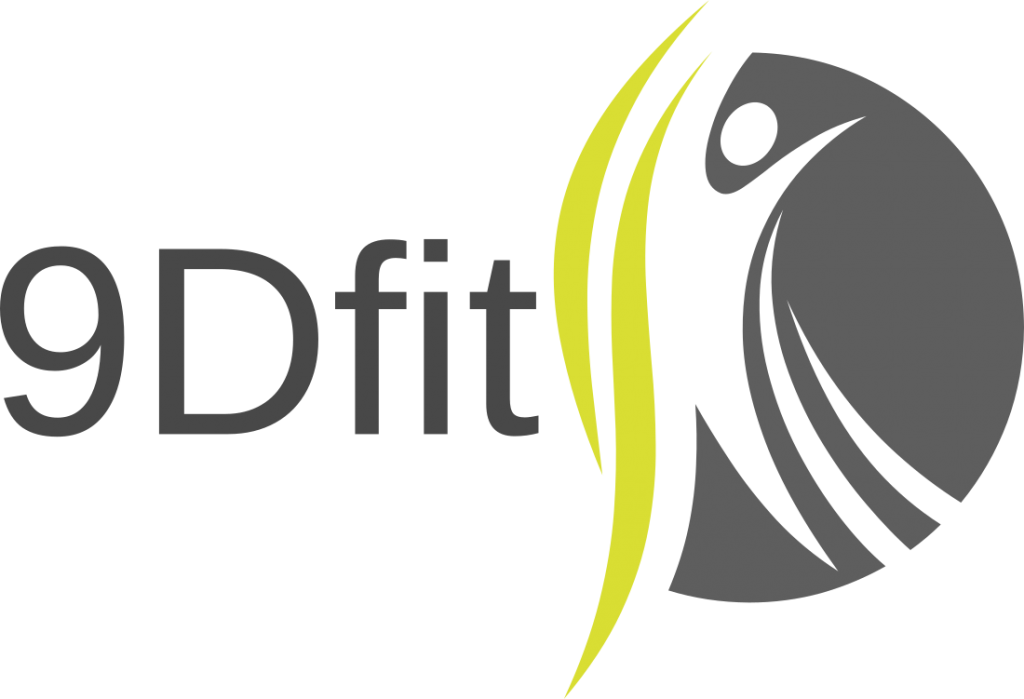By Jason Shea
Assault bike workouts can be some of the most challenging, yet effective workouts you can do.
You know the feeling.
Heart pounding. Gasping for air. Lactic acid burning your legs. The overwhelming feeling of trying to catch your breath while struggling to stay upright (in some cases it may lead to a “slight” inability to control one’s bladder). For many, this is that undeniable feeling you get when you perform a ten to thirty second all out, like your life depends on it, effort on a fan bike.

There is really nothing like it.
The Versaclimber? Close. Rowing? It may take a little longer. Sprinting? Heavy Bag? All great, but there is really nothing quite like the combination of the constant, unrelenting concentric movement in the upper and lower body and lactic acid accumulation one gets from an all out sprint on a fan bike.
In this two-part article series we’ll cover some fan bike benefits, advantages, and workouts, and check out the science with regards to workout duration, all-extremity workout machines, and brain impacts.
Are Fan Bikes Good and What is the Advantage of a Fan Bike?
Whether using the Rogue Echo, Schwinn Airdyne, Hammer Strength HD Air Bike, or the Assault bike, fan bikes are quite possibly one of the most challenging pieces of “cardio” equipment on the market. (The heavy duty Rogue Echo is our personal favorite.)
A 2019 study (6) found that All-Extremity High-Intensity Interval Training on a Fan bike:
- “eliminates weight-bearing concerns;”
- “allows compensation for muscle weakness or fatigue”
- “uses a large amount of muscle mass because it engages the legs, arms and core muscles”
- And “promotes heat dissipation during exercise by generating airflow as the blades of the fan-wheel rotate (6)”
Other benefits of the fan bike include:
- Concentric only: The benefit to concentric-only movement is less muscle protein breakdown and minimal DOMS (Delayed Onset Muscle Soreness)
- Requires Continuous Effort: Unlike a rowing machine, there is no break in the exercise due to the continuous push pull movement of the upper body and pedaling by the legs. In the rowing machine, there is a slight break in the exercise during each recoil.
- Minimal impact: The fan bike gives athletes and trainees body’s a break from the impacts associated with running and sprinting. This can be a great tool for athletes to maintain condition while recovering from impact related wear and tear during season and in the off-season.
What Muscles Are Worked on the Fan Bike?

Depending on individual seat positioning (forward/backward or up/down) the pedaling movement requires several muscles of the lower body including the quads, adductors, knee flexors, hip flexors, calf musculature, and glutes. The push pull movement of the upper body requires the pressing muscles of the upper body (chest, shoulders, triceps, etc) and the pulling muscles of the upper body (back, elbow flexors, grip flexors, rotators, etc). To stabilize the torso upright during the combined upper and lower body movement also requires muscles of the low and mid back, abdominal and hip musculature, “core” and more.
Benefits of All-Extremity Training
A 2020 study out of Obesity Facts looked at the anti-inflammatory impacts high intensity, all-extremity intervals on a bike had on metainflammation. The researchers found improvements in VO2max, body fat percentage, body weight, and waist to hip ratio in the group participating in the all-extremity, high intensity interval workouts (11). A separate study from Experimental Gerontology found that 8 weeks of high-intensity, all-extremity intervals on the bike led to a 2.3 mL/kg/min increase in VO2max. The researchers stated that “this is clinically important because an increase of 3.5 mL/kg/min has been associated with a 15% reduction in all-cause mortality and 19% reduction in CVD mortality” (6).
Lactate Accumulation and the Brain

Believe it or not, this can be a good thing. A greater workout growth hormone response has been linked to increased lactic acid production. What about brain health? Initially learned this one from our good friend and former Yale University Head of Performance/Strength and Conditioning Tom Newman! More on this in Part 2 of this article series.
Did you know that the brain can use lactate as a fuel source when other sources are depleted? A 2013 study on Gulf War veterans expressed that “recent findings in brain energetics suggest that lactate is an alternative fuel under conditions of high neural demand for energy metabolism during cognition and memory acquisition (10).” The paper explains that “during vigorous exercise, skeletal muscles dramatically increase glucose uptake in order to generate ATP for sustained contractions. This depletes plasma glucose availability leading to a 32% decrease in brain glucose uptake. In the normal brain, the lower glucose availability as a fuel is met by compensatory replacement with lactate (10).” The paper also points out that “lactate derived from exercising muscles is another energy source for neurons (10).”
Finally, the paper points out how the lactate is used by the brain, explaining that “astrocytes generate and release lactate into the brain interstitial fluid. Neurons import the lactate and convert it to pyruvate for use in mitochondrial oxidative phosphorylation (10).”
A more recent study, this one from 2020 states “that arterial LA and brain LA uptake (arterial–venous differences across the brain) increases after sprint interval exercise, suggesting that systemic lactic acid affects brain lactic acid uptake and influences executive function after exercise (7).” The paper also points out that “lactic acid is the “missing exercise factor” inducing BDNF synthesis (7).”
BDNF stands for Brain-Derived Neurotrophic Factor. BDNF has been referred to as “fertilizer for the brain.” (To learn more about BDNF and the impacts of exercise, we highly recommend reading the book Spark, by Harvard researcher, Dr. John Ratey).
The researchers in the above 2020 study concluded that “acute SIE led to an improvement in prefrontal-dependent cognitive performance (7).” They also stated that “these findings suggest that acute bouts of SIE (Sprint Interval Exercise) are beneficial to improve cognitive performance 20 min following exercise in young adults (7).”
A separate study, this one from Dialogues in Clinical Neuroscience, had similar findings. The researchers found that increased levels of exercise resulted in an increase in “gray matter in the prefrontal cortex and hippocampus (2)”. This led to improvements in subject’s cognitive function and brain health.
What type of intervals have been found to positively impact the brain?
In 2020, researchers found that after one week, four to eight 30-second high-intensity intervals led to increases in mitochondrial content and the content of proteins linked to neuroplasticity in the hippocampus area of the brain (1).
A separate 2021 study, this one on sedentary subjects, found that “a single session of intense, interval exercise potentiates cortico-motor excitability in sedentary individuals at a workload of 105–125% peak power, but not 69% peak power (3).” The researchers also found that “acute, continuous exercise performed at low to moderate intensities (40–80% HRmax or HRR) elicits no changes in cortico-motor output in moderately-to-low physically active participants (3).”
The researchers concluded that “a strong exercise stimulus intensity (105–125% Wpeak) is necessary to enhance corticospinal excitability acutely in a sedentary population (3).”
High Intensity Intervals vs Moderate Continuous Exercise
In 2020, a group of researchers set out to test the brain effects of high intensity intervals vs continuous training. The paper starts off with the sentence: “Several models suggest that replacing aerobic exercise training performed at moderate-intensity (i.e., moderate-intensity continuous exercise (MICE)) with high-intensity intermittent training (HIIT) may be considerably more effective at improving cardiovascular and cognitive health (8).”

The researchers “found that in the HIIT group, there was an increased level of learning success and this success was related to increased BDNF serum levels. Exercise also increased BDNF levels in serum or plasma, and HIIT seemed a good alternative to MICE as it produced higher levels of BDNF release. Because levels remained highest after intense training cessation and also improved cognitive function, it is thought that BDNF may be increasingly elicited by HIIT as opposed to MICE (8).”
A 2017 study from Frontiers in Endocrinology tested out the effects of a 15-minute cycling protocol that consisted of five one-minute sprints 100–125% V˙ O2max, a warm-up, short recovery periods and a cool-down. After doing this for 6 weeks at 3X per week, subjects saw an average V02Max increase of 10% (9).
36 Minutes vs 30 Hours?
In a 2014 study, a group of researchers looked at the health impacts of a 6-week, 3X/week 30-minute Wingate bike interval protocol. The protocol consisted of one-minute of actual sprinting (broken down into three 20s sprints), a warm-up, cool-down, and rest periods between intervals.
After 6 weeks, V02peak increased by 12% and resting arterial pressure dropped an average of 7%. Male subjects also saw a significantly greater increase in the glucoses transporter protein GLUT4 (shuttles glucose into muscles) (4).
The same research team then did a follow-up study, this one comparing a 12-week, 3X/week 10-minute Wingate bike interval protocol (consisted of one minute of actual sprinting broken down into three 20s sprints) to a 12-week, 3X/week 50-minute continuous, moderate (70%) intensity protocol.
After twelve weeks VO2peak increased an average of 17.65% in the 50-minute continuous workout group and an average of 18.75% on the 10-minute sprint group.
Insulin sensitivity, via glucose tolerance testing (before and 72 hours after training), increased by an average of 53% in the 10-minute sprint group, while the 50-minute continuous, moderate cardio group saw a 34% average increase (5).
Let’s look at the investment of time. When comparing actual workout time, the sprint interval group did 3 minutes of actual sprints per week. This came out to 36 minutes of sprint work over the 12-week study period. The continuous cardio group was doing 150 minutes of work per week, with a total time investment of 1,800 minutes, or 30 hours of work.
36 minutes vs 30 hours?
Autoregulated Fan Bike Workout Examples
Autoregulation is a method of training in which the trainee allows their body/nervous system to regulate the amount and type of work they do. Think in terms of quality of sets vs quantity of sets. A great book on a periodization model of this is Dr. William Kraemer and Steven Fleck’s Optimizing Strength Training. Here they delve deep into the science behind and practical application of Daily Flexible Non-Linear Periodization. In other words, allowing your body/nervous system and it’s recovery rate/readiness to train to determine the type, volume, and intensity of the workout for the day.
Quick Tip: The Oura Ring and Omega Wave can track readiness to train through their HRV (Heart Rate Variability) monitoring. Hawkins Dynamics Force plates can be used for measuring this through vertical jump and power testing. One of the godfathers of modern strength and conditioning, Charles Poliquin, used to recommend using hand grip dynamometer testing first thing in the morning to test recovery and determine readiness to train.
These four workouts utilize autoregulation (quality vs quantity). Your body and output determines how many sets you will do. Here’s how it works:
First, find and record your optimal seat setting (forward/back and height). Next, warm up with a few moderate intervals or longer warm-up on the bike.
Next, find your peak and average 10 second and 20 second wattages. When you are ready to go, hit the 10/20 interval button on the bike and perform an all-out effort on the bike for 10 seconds. Record the peak and average wattages and rest.
After you have recovered as long as you need, do the same for a 20 second sprint interval (hit the 20/10 button). Record those peak and average wattages. These are your baseline numbers. (Over time, as you increase your wattages, use the new numbers as new baselines).
Workout Example 1 (Beginner/Intermediate)
3 Autoregulated (10% drop-off) 10 Second Intervals in 30 minutes
If your peak wattage does not hit your best, or stay within 10% of your best, the interval does not count. For example, if an athlete’s baseline peak wattage is 1000 watts in the 10 second sprint, that athlete would need to hit 900 watts (or higher) per interval. If the wattage does not hit 900 on one of the sprints, this athlete is done for the day. Rest as long as you need between intervals, as you have a half hour to get the workout done.
Workout Example 2 (Intermediate)
3 Autoregulated (10% drop-off) 20 Second Intervals in 30 minutes
Same autoregulation standard as Workout Example 1, this one with 20 second intervals.
Workout Example 3 (Intermediate/Advanced)
10 Autoregulated (10% drop-off, one Mulligan allowed) 10-second Intervals in 40 minutes
Same autoregulation standard as Workout Example 1 and 2, but allowing for one “miss” across the 10 intervals.
Workout Example 4 (Advanced)
10 Autoregulated (10-15% drop-off, one Mulligan allowed) 20-second Intervals in 60 minutes
10-15% autoregulation standard while allowing for one “miss” over the 10 intervals.
Time to Saddle up
As you learned, assault bike workouts can have many benefits. From cardiovascular and brain benefits, to power and lactic threshold improvements, the fan bike is both an effective and efficient training tool.
Wouldn’t it be great to trade those long, time consuming workouts for maximal “bang for your buck” short, high intensity workouts. Imagine how it would feel to improve your total body power while minimizing your time in the gym? Picture how it would feel to have both improved brain health and body composition from half the time spent in the gym per week!
It’s time to saddle up and give the fan bike a try!
Thanks for reading and see you back here for Part II where we will go over a few more advanced workouts and ways to include the fan bike into daily workouts. We will also discuss the impacts on the brain and critical decision making under duress (and perhaps a couple workouts to test/train this as well:).
Enjoy the workouts!
References
- Dos Santos et al. One-Week High-Intensity Interval Training Increases Hippocampal Plasticity and Mitochondrial Content without Changes in Redox State. Antioxidants. 9; Pp 445. 2020.
- Erickson et al. Physical activity and brain plasticity in late adulthood. Dialogues in Clinical Neuroscience. 15; Pp 99-108. 2013.
- Gibala et al. Understanding the Neurophysiological and Molecular Mechanisms of Exercise-Induced Neuroplasticity in Cortical and Descending Motor Pathways: Where Do We Stand? Neuroscience. 2021.
- Gillen et al. Three minutes of all-out intermittent exercise per week increases skeletal muscle oxidative capacity and improves cardiometabolic health. PLoS One. 9(11); e111489. 2014.
- Gillen et al. Twelve weeks of sprint interval training improves indices of cardiometabolic health similar to traditional endurance training despite a five-fold lower exercise volume and time commitment. PLoS One. 11(4); e0154075. 2016.
- Hwang et al. Effect of All-Extremity High-Intensity Interval Training vs. Moderate-Intensity Continuous Training on Aerobic Fitness in Middle-Aged and Older Adults with Type 2 Diabetes: A Randomized Controlled Trial. Exp Gerontol. 116: Pp 46–53. 2019.
- Kujach et al. Acute Sprint Interval Exercise Increases Both Cognitive Functions and Peripheral Neurotrophic Factors in Humans: The Possible Involvement of Lactate. Frontiers in Neuroscience. 13:455. 2020.
- Mekari et al. Effect of High Intensity Interval Training Compared to Continuous Training on Cognitive Performance in Young Healthy Adults: A Pilot Study. Brain Sciences. 2020.
- Phillips et al. A practical and time-efficient high-intensity interval training program modifies cardio-metabolic risk factors in adults with risk factors for type II diabetes. Frontiers in Endocrinology. 8; 229. 2017.
- Rayhan et al. Prefrontal lactate predicts exercise-induced cognitive dysfunction in Gulf War Illness. Am J Transl Res. 5(2); Pp 212-223.2013.
- Soltania et al. Combined All-Extremity High-Intensity Interval Training Regulates Immunometabolic Responses through Toll-Like Receptor 4 Adaptors and A20 Downregulation in Obese Young Females. Obesity Facts. 13; Pp 415-431. 2020.

